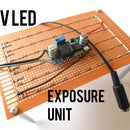Introduction: Transformerless Adjustable Joule Thief
Did you have problems winding the toroidal transformer of a regular joule thief? If so then this instructable is for you! And if not it is also an interesting circuit to see.
In this instructable I will show you how I made the simplest joule thief I know of with only an inductor!
Step 1: Demonstration
A joule thief is a circuit which boosts up voltage usually from a single AA cell to a higher voltage. It is most often used to drive LEDs with single "dead" battery.
Although the regulation is not as visible as it should. It's because I used a new battery. If you want to dim the light completely, use a 10kΩ potentiometer.
Step 2: Parts List
For this instructable you will need:
perfboard
male headers (or you can just solder wires)
1x - BC327 small signal PNP transistor (others might work also but not as good)
1x - BC337 small signal NPN transistor (others might work also but not as good)
1x - 33µH inductor
1x - 470pF ceramic capacitor
1x - 47kΩ resistor
1x - 5kΩ or 10kΩ potentiometer or 2.2kΩ resistor(if brightness adjustment is not necessary)
Step 3: Schematic and Component Layout
The schematic is very plain and so is the component layout. I used the PCB layout as a guide for perfboard. I don't think making a custom PCB is worth it this time.
The original schematic can be found here: talking electronics
To make the schematic and component layout I used a free program CadSoft Eagle which I would recommend to anyone making schematics or PCBs.
Step 4: Conclusion
Although this may not be the most efficient joule thief ever, it gets the job done without the need of a toroid. The already small PCB could be made even smaller if SMD parts were used(but in reallity not by much).
Don't forget to post your results into the comments.














